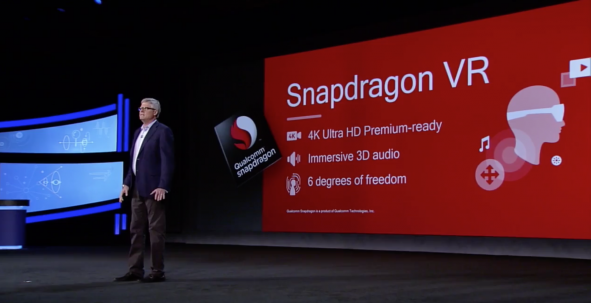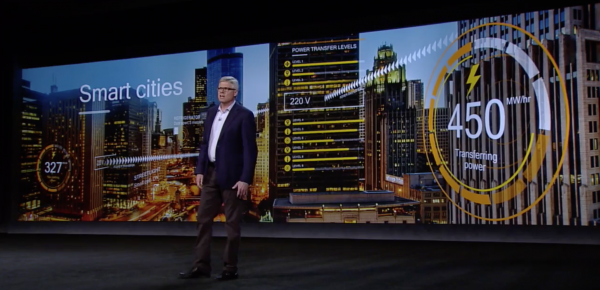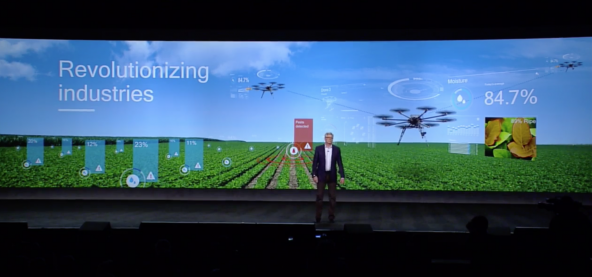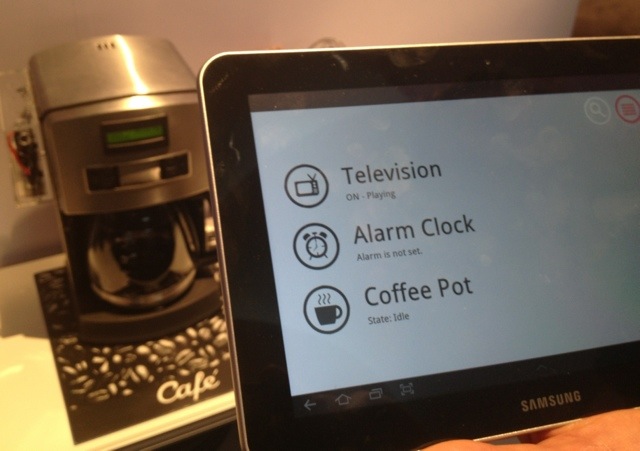Steve Mollenkopf, CEO of Qualcomm, took the stage at CES this morning to walk us through the ambitious plans the company has for developing and implementing 5G connectivity to power immersive experiences, connecting everything, and transforming industries such as transportation and healthcare. According to a study on the “5G Economy” the company conducted, 5G-related goods and services will generate over $12 trillion in value in 2035 and create over 22 million jobs worldwide.
Powering Immersive Experiences On 5G
In November. Qualcomm unveiled their newest processing chip called Snapdragon 835, which the company now hopes will work with the 5G network it is building to enable a better and smoother immersive experiences on desktop and mobile devices. The higher data speeds enabled in 5G means faster downloads, which is essential in improving untethered VR experiences. Qualcomm is also working with other media partners to develop VR and AR experiences powered by its processor. The company previewed a Power Ranger-themed VR experience it developed with Lionsgate, as well as a shaper VR livestream of NBA matches that NextVR will be able to deliver over 5G connectivity.
 Connecting Everything To Build A Smart Future
Connecting Everything To Build A Smart Future
The enhanced connectivity provided by 5G networks will also enable us turn everyday objects into connected devices. And since the 5G connection will be strong enough to carry a city-wide worth of utility and infrastructure devices, it would bring to life the kind of smart cities that some technologists have envisioned where those connected devices communicate with each other to share data and offer the city dwellers perks of convenience and safety.
 Transforming Industries With Next-Level Connectivity
Transforming Industries With Next-Level Connectivity
Perhaps most importantly, 5G networks, coupled with powerful processors capable of handling that accelerated connectivity, will transform various industries ranging from healthcare to transportation by enabling new tools such as autonomous drones and industrial IoT networks. For example, Qualcomm is working with healthcare companies such as UnitedHealthcare, Novartis, and Philips to create a healthcare network that securely connects medical and healthcare devices over 5G. The faster speed brought by 5G will also be instrumental in the development of connected cars and self-driving cars, according to Qualcomm, which in turn will bring major disruptions for the auto and transportation industries.
 Key Takeaways For Brands
Key Takeaways For Brands
These innovations that Qualcomm is working to unleash with 5G network will usher in a new reality for consumers and brands, where new immersive formats become the norm, instant connectivity is expected everywhere, and AI-powered automation and data analysis running in the background quietly improves services and customer experiences. To get ready for that future, brands will need to start exploring immersive media formats such as VR and AR to build up their content catalogue, adopt a data-centric omnichannel approach in designing your customer experience to ensure that it stays consistent across platforms, and begin to think about how your brand may incorporate machine learning and AI automation into your products and services to deliver a better customer experience.


